15.06.2017
The State of Planetary and Space Sciences in Africa
Africa has an enormous potential to provide insights into planetary and space sciences, but it has remained largely untapped. Fostering a new generation of scientists promises far-reaching benefits.
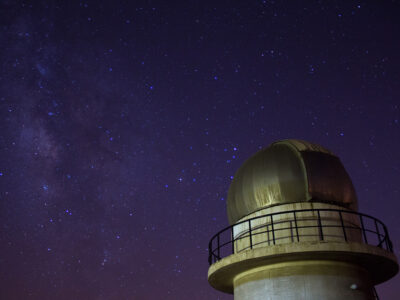
The scientific and societal value of exploring our solar system and studying the meteorites that fall to Earth is widely accepted in today’s scientific community. However, not all regions of the world have been able to assert themselves in this endeavor. Africa in particular is underrepresented in planetary and space sciences.
Planetary and space science (PSS) research groups are now emerging in Africa, but they remain scattered and underfunded. Here we review PSS programs in Africa and pinpoint ways to further elevate PSS.
An Opportunity on Many Fronts
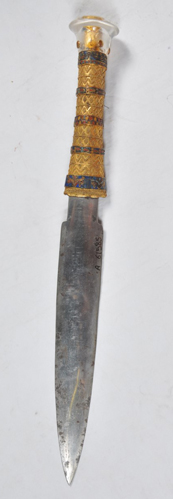
Exploration beyond Earth—and the technologies involved—has, in part, been responsible for jump-starting innovation and economic growth in many countries [International Space Exploration Coordination Group, 2013]. For example, PSS has led to technical breakthroughs in the study of rocks and minerals, including the portable handheld hyperspectral and geophysical sensors useful in mineral exploration. The technology developed for hyperspectral and geophysical imaging of Earth and other planets is now being used for farming, including for precision agriculture of high-value wine grapes [Mustard, 2017]. Much large-scale farming, such as corn in the U.S. Midwest, is mechanized with remote-controlled harvesters and other instruments that use GPS to navigate.
Public attention to PSS discoveries in North America, Europe, or Asia also serves as a major driver in inspiring interest in scientific and engineering careers. Thus, PSS is a key factor in promoting and retaining a country’s intellectual and economic prowess.
PSS can also help us understand our past. Recent archeological findings reveal that our ancestors, including the ancient Egyptians, learned how to process metal from meteoritic iron before metallurgic techniques to extract iron from crustal rocks became available [Rehren et al., 2013; Comelli et al., 2016]. Thus, PSS contributed to the discovery that meteorites may have played a role in transitioning humanity into the Iron Age.
What is more, PSS teams often involve physicists, chemists, geologists, biologists, and engineers working on a common problem. This multidisciplinary aspect serves as a template for tackling pressing issues in our modern world. In particular, because climate change and food are of critical relevance in Africa [Ngcofe and Gottschalk, 2013], government agencies’ development of high-level skills in fields such as PSS can empower communities to better and directly address their specific problems.
Planetary and Space Sciences in Africa Today
PSS is a vast domain of research. Here we focus on the exploration of the solar system, the study of planetary material (meteorites), and geological processes affecting planets (e.g., impact cratering).
A preliminary scan of articles published between 2000 and 2015 in four representative PSS journals—Icarus, Journal of Geophysical Research: Planets, Journal of Geophysical Research: Space Physics, and Metoritics and Planetary Science—reveals that Africa produces less than 1% of the world output of scientific publications in PSS, despite having more than 15% of the world’s population (Figure 1). What factors cause this low rate, and how can production be increased?

Discussions at the 35th International Geological Congress (IGC) last year in Cape Town, South Africa, revealed a widespread misperception in modest- and low-income African countries that funding fundamental science costs society a lot but has little or only long-term societal impact. This misperception remains an obstacle for developing PSS, representatives at IGC discussed.
However, solutions exist. For example, the recent emergence of PSS in North Africa illustrates the key role played by a few dedicated individuals, particularly when they are supported by political will favoring the training and academic recruitment of a knowledgeable young generation. For an overview of emerging PSS activities across Africa, see Figure 1.
PSS in Southern Africa
Southern Africa has a strong PSS presence and the most advanced facilities on the continent, including the South African National Space Agency and the South African Astronomical Observatory (founded in 1820). The world’s largest radio telescope project, the iconic Square Kilometre Array (SKA), is currently being built in the deserts of Australia and South Africa.
The SKA has strong government support, and degree programs in astronomy are growing to meet the demand for scientists, but the planetary sciences have no dedicated academic or research programs in southern Africa. Isolated groups work on specific projects, such as meteorite and impact cratering studies, stellar occultations, asteroid detection and characterization, and lunar laser ranging.
Efforts in North Africa
In North Africa, Morocco has gained visibility in meteoritics and impact studies [e.g., Chennaoui Aoudjehane et al., 2016] with the organization of international conferences, outreach (Space Bus Morocco), and frequent radio and TV appearances. The Ibn Battuta Center in Marrakesh is testing instruments and subsystems related to Martian exploration. In parallel, a group of astronomers at Cadi Ayyad University (Marrakesh) has established the first astronomical observatory in the Atlas Mountains of Morocco [Benkhaldoun et al., 2005].
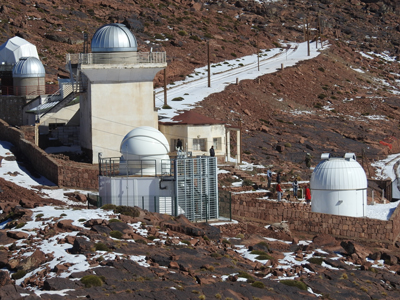
In addition, the Arabian Geosciences Union launched a section on planetary science and astrobiology in 2015 for PSS scientists across northern Africa and the Middle East.
East Africa PSS Programs
In East Africa, Egypt, Kenya, and, more recently, Ethiopia have launched national space programs.
Remote sensing techniques are the cornerstone of PSS; knowledge of these techniques allows researchers to develop skills that are widely applicable in Earth, environmental, and atmospheric sciences. Recognizing this, Egypt has established a National Authority for Remote Sensing and Space Sciences (NARSS), which focuses on acquiring technical knowledge and capabilities to build small research and remote sensing satellites. NARSS also addresses environmental management and resource exploration, and it has recently launched a geoportal to facilitate access to Earth remote sensing data for research and education purposes.
Currently, the Egyptian government is establishing the Egyptian Space Agency in collaboration with China. Leading astronomical research centers in eastern Africa include the National Research Institute of Astronomy and Geophysics in Egypt, which operates the Katameya Observatory, the largest telescope in the Arab world. The institute also is planning to build an observatory on top of Mount Sinai.
The Egyptian Geological Museum in Cairo houses a small meteorite collection, including a specimen of the Nakhla Martian meteorite, which fell to Egypt in 1911. The exhibition is open to the public. In addition, Egypt has started a program for promoting science, technology, engineering, and mathematics (STEM) by establishing 11 STEM schools distributed across the country.
Ethiopia’s vision is to focus its priorities toward serving local needs such as communication and agriculture. Ethiopia is home to the privately funded Entoto Observatory and Research Center, which is located on top of 3200-meter-high Mount Entoto, near Addis Ababa.
Kenya is taking advantage of its equatorial position to efficiently launch satellites. Its capital also hosts a regional SERVIR facility for eastern and southern Africa; SERVIR is a joint venture by NASA and the U.S. Agency for International Development that supports satellite-based Earth monitoring and modeling in developing nations around the world.
PSS in West Africa
In West Africa, Nigeria has a space program that focuses on environmental management, resource exploration, communication, and defense projects.
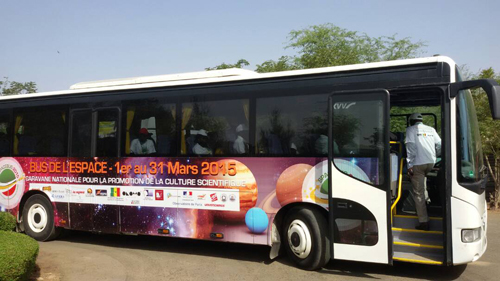
The Ghana Space Science and Technology Centre, with current projects in radio astronomy, was established in 2012. The University of Ghana in Accra offers courses in geochemistry, including one that focuses on cosmochemistry. A network of international collaborations among Ghana, Europe, and North America was established around the time of the International Continental Scientific Drilling Program project at the Bosumtwi impact crater in Ghana in 2004. This collaboration resulted in several local scientists receiving advanced degrees overseas before returning to Ghana, and the program stimulated Ghanaian ecotourism [e.g., Boamah and Koeberl, 2007].
The Senegalese Association for the Promotion of Astronomy is very active in public outreach and has its own Space Bus program. PSS is virtually nonexistent in central Africa, but basic planetary sciences may be taught locally at the undergraduate level.
The Future of PSS in Africa on a Continental Scale
On a fundamental level, Africa needs more experts in STEM subjects, including PSS. This need is well documented in the declaration and action plan created by participants at the 2015 African Higher Education Summit.
To foster PSS in Africa, a group of researchers is proposing a 20-year continent-wide push to strengthen academics, research, and innovation surrounding PSS. This push would build on and enhance local efforts.
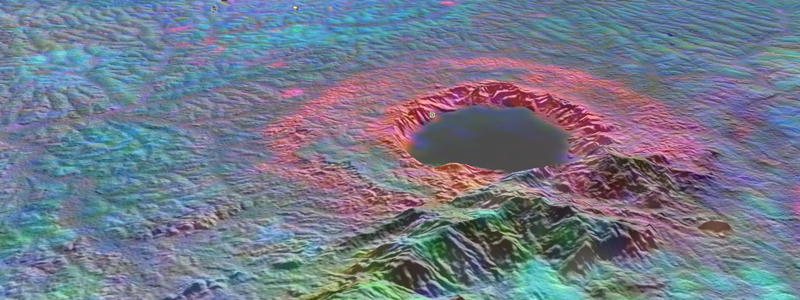
Key aspects of this program, dubbed the Africa Initiative for Planetary and Space Sciences, involve prioritizing M.Sc. and Ph.D. scholarships, temporary study-abroad fellowships for M.Sc. and Ph.D. candidates, and visits of junior (volunteering Ph.D. students) and senior researchers from outside the continent to Africa for transfer of knowledge. In addition, PSS experts and advocates in Africa would encourage existing research groups to take advantage of opportunities within NASA, the European Space Agency, and other space agencies to contribute to missions.
The Africa Initiative also fosters greater use of open access data and publications and leverages Africa’s geological record to offer fertile ground for understanding processes on other planets. Africa hosts 20 confirmed bolide impact structures and contains several planetary analogs (such as the Great Rift Valley’s Afar region and the Kaapvaal Craton in South Africa), and some of its arid lands offer prime locations to search for meteorites.
Benefits from Expanding PSS in Africa
In Africa, as in the rest of the world, government investment in research and education is motivated by projected social and economic benefits. Expanding PSS may help to address several of the United Nations’ Sustainable Development Goals that have already captured the interest of African governments: quality education, economic growth, reducing inequalities, climate, and peace.
PSS focuses on universal questions, such as the origin of life and the evolution and habitability of planets, and they inspire people to think of the world as a single planet, not as a collection of countries. This favors international and intra-African cultural exchanges, which may contribute to peace and economic and social development.
Wider sharing of knowledge may have positive impacts on the private sector: Facilitated access to space-based geostrategic data may attract investment in mineral resources as well as infrastructure development. Increasing innovation and patents with economic spin-offs requires an increasing number of professionals with engineering skills. The wider use of satellite data can assist in finding solutions to environmental, agriculture, and health issues (e.g., desertification, deforestation, artisanal mining, farming by satellite, and identification of factors controlling the spread of disease).
The knowledge gained and resources developed by current PSS efforts in Africa are only the beginning. As PSS grows in Africa, so too will its capacity to address the multiple challenges that this continent is facing for sustainable and inclusive economic growth. The pioneers of PSS in Africa that we highlight here have shown us that this is possible, and the Africa Initiative for Planetary and Space Sciences will hopefully build on this to help us reach our common goals.
Quelle: EOS
